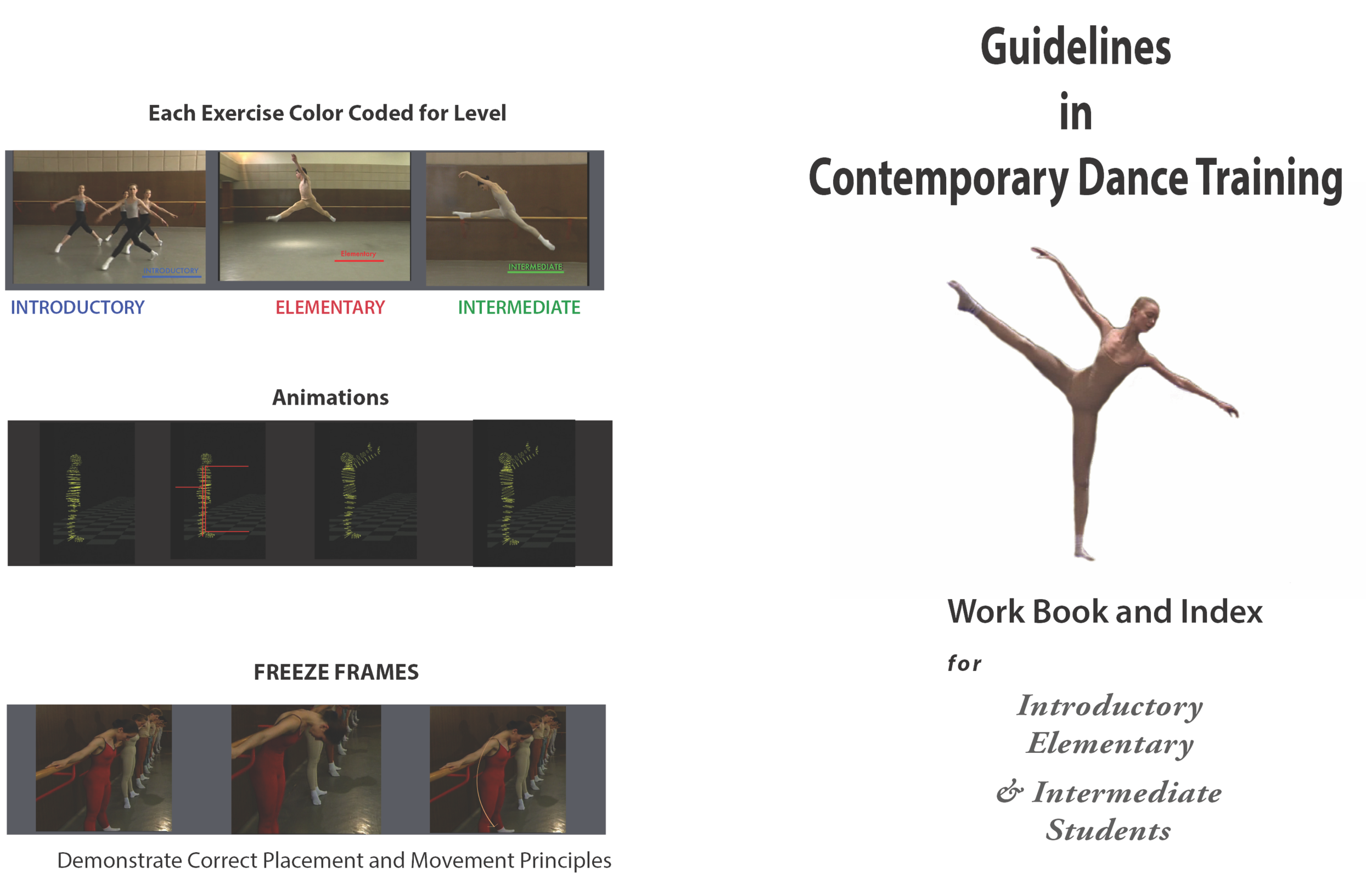Written Study Aids
Provide Added Support for Beginner Students and Teachers
Available with the purchase of all videos / Send your Vimeo transaction ID to dance.gge@gmail.com
The pdf copies will be forwarded to your email address
Study Plan for Contemporary Dance Training
by Phyllis Gutelius
“The challenge is to balance enthusiasm with care, eagerness with commons sense, and energy with clarity and knowledge.”
The beginning premise is that as a dancer develops, from level to level, the first step is taken when they understand the principles that support, and drive the movements to be mastered.
The next step, equally important follows; when time and repetition serve as catalysts which imprint on muscle, nerve, and sinew of the dancer’s body, what the mind and instincts first understood. We all have experienced the flash of insight as, something which we had understood intellectually even a year earlier, translates into a physical experience finally mastered.
Two other precepts have influenced the presentation of the lesson. The first, that even at the introductory level the emphasis should be on the dancer’s developing awareness of movement and space, rather than on positioning the body. The second, being that awareness of the music begins with the pulse, accent and phrasing, and not with the counts. Corrections, ever present in beginner’s work, which, by their nature, require many repetitions before they can be implemented, are also stressed.
The Guidelines Workbook
by Phyllis Gutelius
“The Floor-Work, which begins these three lessons, works to develop the torso of a dancer in the same way that sitting, kneeling and crawling prepares an infant to stand and walk.”
It is designed to develop the dancer’s body. Gradually, from exercise to exercise, range of movement will extend as different relationships to space and movement dynamics are explored.
The six divisions of the floor exercises focus on movement principles which reflect the broad range of movement that exists today in the vocabulary of contemporary dance. Contraction. Release, Spiral, Opposition, Duality … the terms are many and still generating.
Floor exercises have a direct relationship to exercises at the Center and Barre, just as the Center exercises relate to the Traveling exercises. This logical course is easy to understand, when one sees that Graham, like other innovators in contemporary dance continued throughout her career to develop her unique approach to movement, in classes structured to teach her dancers how to articulate their bodies in specific ways.
A detailed index accompanies each video
Guidelines in Contemporary Dance Training
Each Exercise Listed by Title, Type, Level, Musical Phrasing, with Additional Technical Advice



